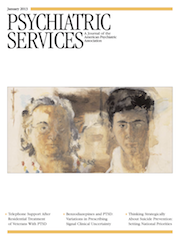Provisions in the Affordable Care Act (ACA) set a national floor for Medicaid eligibility for adults with annual incomes at or below 138% of the federal poverty level ($15,415 for an individual in 2012), which would extend health insurance coverage to millions of Americans. The June 2012 Supreme Court decision ruling effectively made such expansion an option for states. As states consider their options, an updated analysis from the Kaiser Commission on Medicaid and the Uninsured (KCMU) shows that if all states were to expand their programs, state Medicaid spending would rise by $76 billion from 2013 to 2022, an increase of less than 3%, while federal Medicaid spending would increase by $952 billion, or 26%.
If all states were to expand their programs, an additional 21.3 million individuals could gain Medicaid coverage by 2022, which together with other provisions of the ACA would cut the uninsured population by almost half (48%), according to the 56-page Kaiser report on implications of the new data analysis. Some states, such as Vermont, Massachusetts, New York, Maine, and Maryland, that had expanded Medicaid coverage to some adults before passage of the ACA may realize savings when they transition these covered populations into the expansion and thereby receive higher federal matching rates. As with all of Medicaid, the impacts of the expansion would vary across states. States with relatively large uninsured populations before expansion, including Nevada, Florida and Mississippi, are likely to see higher increases in state costs, but these increases are expected to be small relative to decreases in the uninsured population and gains in federal matching funds.
Even in states that elect not to expand coverage, Medicaid enrollment and spending is expected to rise. In fact, the report notes, if no states opt for expansion, enrollment would still rise by 5.7 million people by 2022 and the number of uninsured would drop by 28%. That is because other ACA provisions, including the implementation of health exchanges and the requirement to simplify enrollment, are expected to increase Medicaid enrollment of some adults and many children who are already Medicaid eligible but who have not yet enrolled. After states implement these other ACA provisions, the additional cost of implementing the ACA Medicaid expansion would be small—$8 billion from 2013–2022, representing a .3% increase over what states would spend under the ACA without the expansion.
Another source of savings for states that opt to expand coverage is a decline in the costs of uncompensated care (hospital bills for people without insurance, for which states that did not opt for expansion would be responsible). If all states adopted the Medicaid expansion, it is estimated that states could save $18 billion on uncompensated care from 2013 to 2022.
The report was compiled for the KCMU by analysts from the Urban Institute, who used the institute’s health insurance policy simulation model to provide national as well as state-by-state estimates of the impact of the ACA on federal and state Medicaid costs, Medicaid enrollment, and the number of uninsured. Because of data limitations, the report’s authors were unable to estimate several potential sources of state fiscal gain from the Medicaid expansion, such as additional revenues from economic activity that would result from more federal Medicaid dollars being spent within the state.
The full report,
The Cost and Coverage Implications of the ACA Medicaid Expansion: National and State-by-State Analysis, is available on the KCMU Web site at
www.kff.org/medicaid/upload/8384.pdf.
Other new resources related to the ACA Medicaid expansion recently posted on the Kaiser Web site include two briefs that provide insight into how states’ decisions are likely to affect people. The briefs, based on focus groups and interviews conducted in Cincinnati, Houston, Las Vegas, and Tampa with uninsured adults who could be eligible for the expansion in 2014, highlight the significant health and financial consequences. Ten profiles of individual participants provide a human dimension of what is at stake in state decisions (
www.kff.org/medicaid/8385.cfm).

